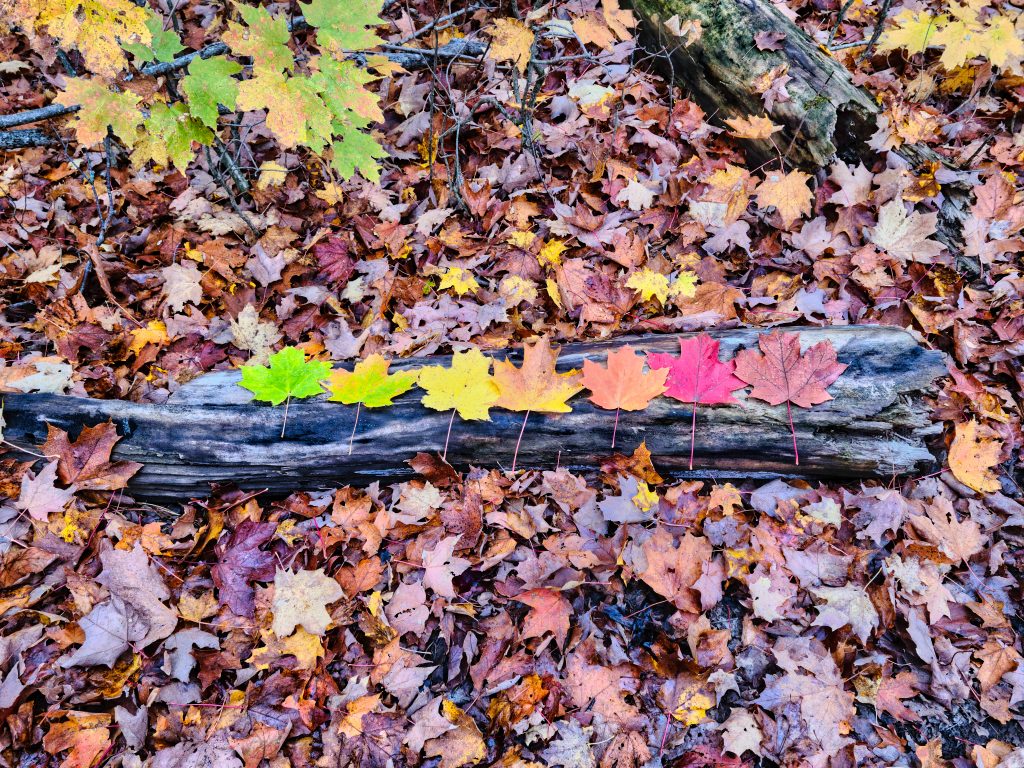
Fall comes in many colors. What’s your favorite? Image credit: Marie Zhuikov
What colors do you think of when you think of fall? For me, no surprise, it’s the oranges, yellows and reds on those gorgeously attired maple, birch and black walnut trees. What about sickly pea-green? Well, we’ll get into that shortly.
The State of Wisconsin Department of Tourism has a handy, interactive and always-updated map to check peak tree colors no matter where you might live or want to visit. In addition to indicating the prime peeping times, the map also shows bodies of water—lots of lakes, rivers and streams throughout the Badger State. The thing is, when the trees shed their bright robes, the leaves end up on lawns and in streets, often making it into waterways.
Municipalities do their best to keep the leaves out of the streets and stormwater features because once the organic matter meets water, it sheds the phosphorus that was bound up in it. It’s a process that can lead to that unappealing pea-green color, which is definitely more common in the summer but if the water temperature is warm enough, the nasty shade due to algae growth can appear in fall, too. Excess phosphorus reduces oxygen levels in a lake, river or stream. That can be dangerous for fish and wildlife.
You can do your part by raking lawns, especially before the prediction of rain. A study by the U.S. Geological Survey (USGS), investigated leaf collection in Madison, Wisconsin. The researcher found leaves that made their way into storm drains accounted for more than half of the total load of phosphorus in the fall.
Composting or mulching those vibrant oblong, lobed and kidney-shapes can also lead to healthier waters. The USGS study emphasized that leaf removal is one of only a few ways to reduce dissolved phosphorus. And, the study stressed that raking, composting or mulching means an 80% reduction in phosphorus, resulting in healthier water.
Color me happy.


